A brief introduction to the extraction process and Technology of Italian espresso Espresso
Professional coffee knowledge exchange more coffee bean information please follow the coffee workshop (Wechat official account cafe_style)
People who are fastidious about drinking Espresso pursue the top Espresso, but it is not easy to extract the top Espresso. Generally, mass-produced household machines cannot accomplish the task. If you really want to enjoy the top Espresso at home, you have to spend ten thousand dollars to buy a professional Espresso machine, plus a better bean grinder (Grinder) needs about two or three thousand. In order to extract top Espresso and have excellent technology, you must also go through constant practice.
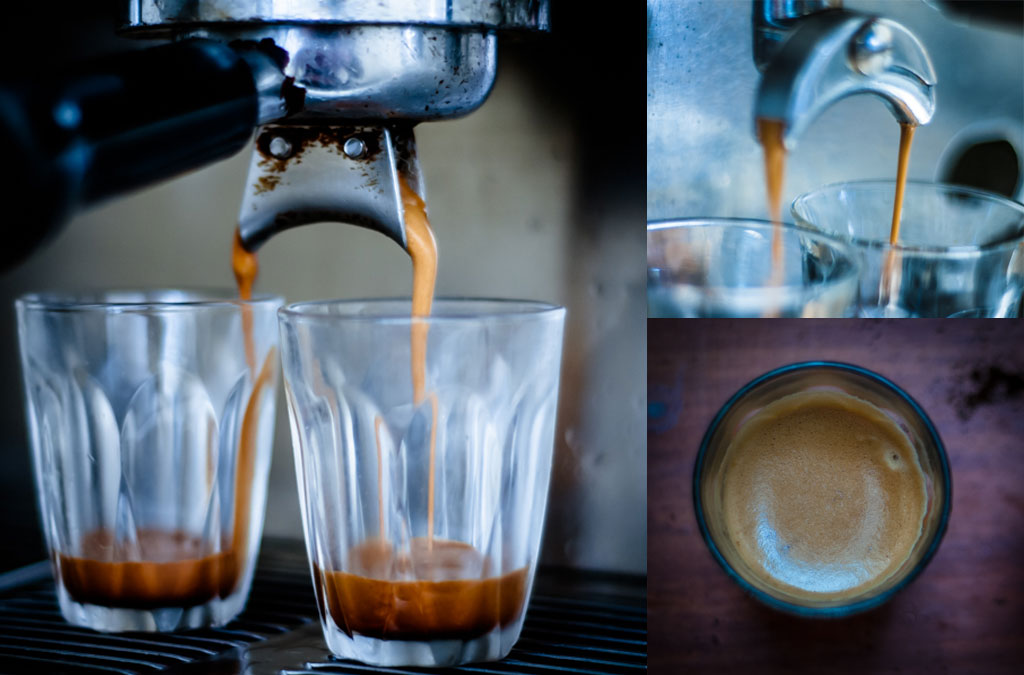
What on earth is Espresso?
Long before the existence of Espresso machines in the 1880 s, there was the concept of Espresso. Ideally, coffee beans for coffee drinks should be used within 2 weeks after baking, ground before extraction and extracted before drinking; the key point is to use coffee powder made from fresh coffee beans. Espresso is the ideal coffee. After more than 100 years of continuous research and development, there are all kinds of Espresso machines on the market, and there are all kinds of household machines at various prices.
When the Italians discovered the extraction of Espresso coffee in the early days, customers couldn't help asking what the scum was about the oily coffee Crema on top. The coffee shop followed this problem and called Espresso Caffe Crema, and it took about 10 years to call it Espresso.
The word Espresso comes from Italian and has two meanings, one is widely recognized "compressed" and the other is less interpreted "fast". Both can be used to explain espresso Caffe Espresso, that is, Espresso is an espresso made in a compressed manner on the spot after being specified by the customer.
In modern times, the top Espresso is about 15 grams (0.53oz) of finely ground coffee powder at a pressure of about 9.14kg per square inch (130lbs per square inch; 8.8atmospheric pressure) and 88.8 degrees 93.3 degrees Celsius (190 degrees Fahrenheit 200 degrees Fahrenheit) of hot water. After 25 ±5 seconds, about 59 cc (2 ounces) of coffee is extracted.
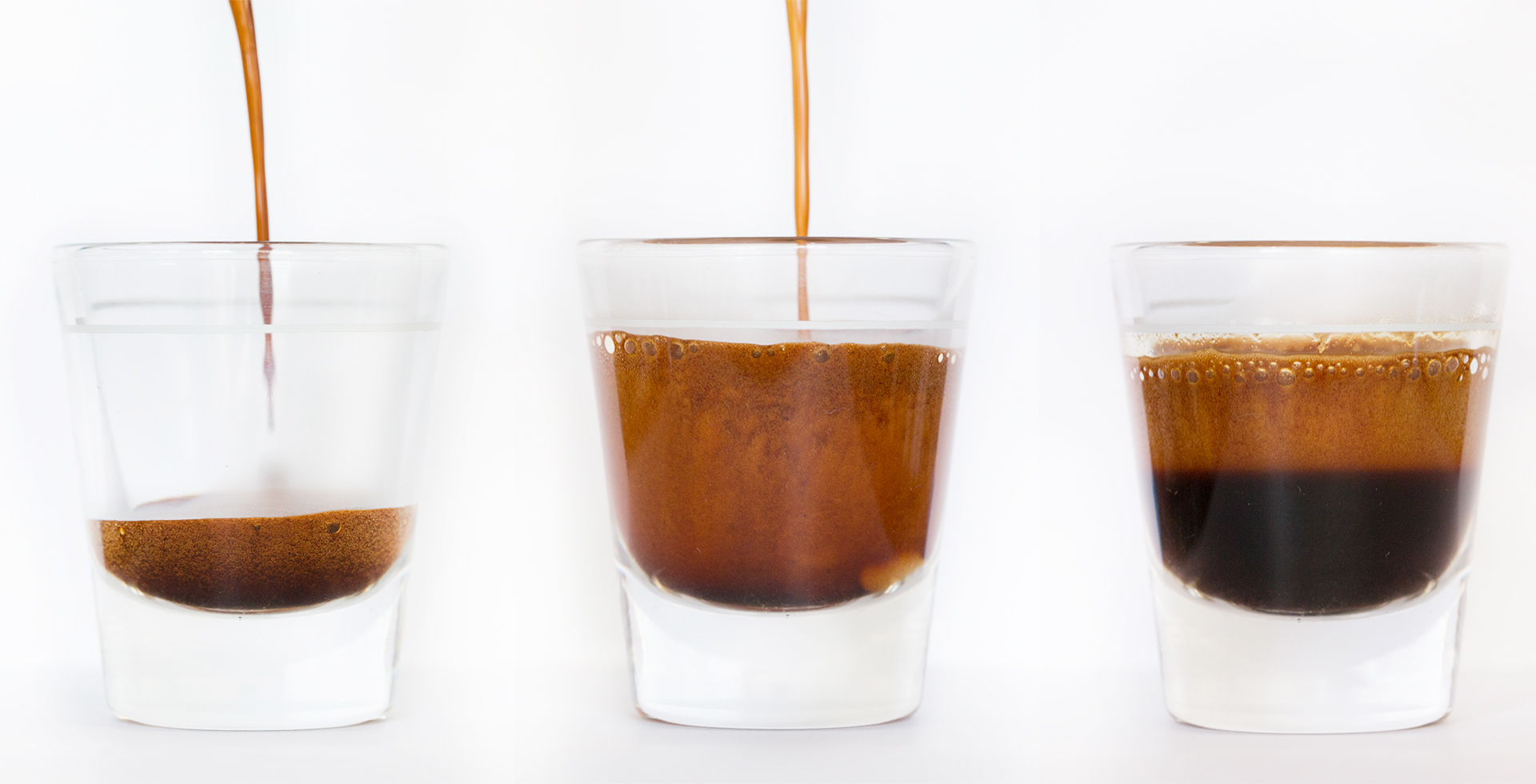
Espresso coffee beans
The aroma of coffee in the coffee shop makes customers feel good and can even introduce passing guests. However, each kind of coffee bean has its advantages and disadvantages. The characteristics of coffee beans are strongly demonstrated by the extraction method of Espresso, so if you use a single bean, the shortcomings of the bean will be excessive and cause an unpleasant taste, which is why Espresso is almost entirely extracted with mixed beans, and only a few beans can be used for Espresso alone. The basic principle for choosing mixed beans is that the extracted Espresso must have a thick texture (heavy body), a proper acidity (acidity), and some sweetness to balance the sour and bitter taste of the coffee.
Mixing of Espresso coffee beans (Coffee Blend)
Espresso blended beans contain most of the coffee beans such as Brazil, Indonesia, or Ethiopia. These beans are usually sun-treated (Natural,Dry Processed), the whole coffee fruit is dried before the beans are taken, or half-sun treatment (semi-wet processed) is used to peel but keep the pulp dry. The beans treated in this way have thicker texture, sweeter, proper acidity, suitable for Espresso and produce more Crema. If the Espresso extracted from single bean is treated in this way. However, the Espresso of this single bean destroys the Aroma and taste of Espresso. Another water washing treatment (Wet Processed) is peeled and fruit removed before drying the beans, which produces less sweet and sour beans and is usually not suitable for extraction of Espresso alone. This kind of beans will have a strong aroma of flowers and fruits, bake them shallowly, and add a small amount of mixed beans, which is very suitable for extracting Espresso.
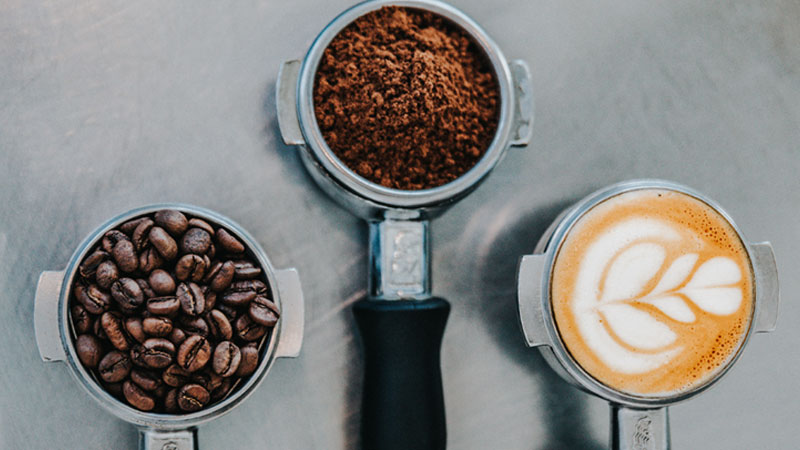
Espresso beans are usually mixed with 2 or 3 kinds of beans, and some people even mix 7 or 8 kinds of beans. According to the mixing principle, the best mixture suitable for each person's taste can be found by using different kinds of beans for many times. Coffee shops that usually sell Espresso blended beans do not disclose specific bean information, but you can ask about the percentage of beans and seed producing areas.
At present, there are many coffee shops in China, which not only provide their own baked beans, but also sell freshly baked beans to customers. Unless you are addicted to baking beans, you really don't need to bake coffee beans at home.
Extraction of water from Espresso
We usually ignore the water used to extract coffee, and coffee should be extracted with tasteless pure water. Pure water is not distilled water, but should contain appropriate minerals, soft and hard water. Use too soft water, too few minerals, resulting in not enough thick texture of coffee; too hard water, too many minerals, may calcify the coffee machine and can not properly extract good Espresso. In general, household water filters can filter out water suitable for Espresso, and it is also quite convenient to buy bottled water in stores.
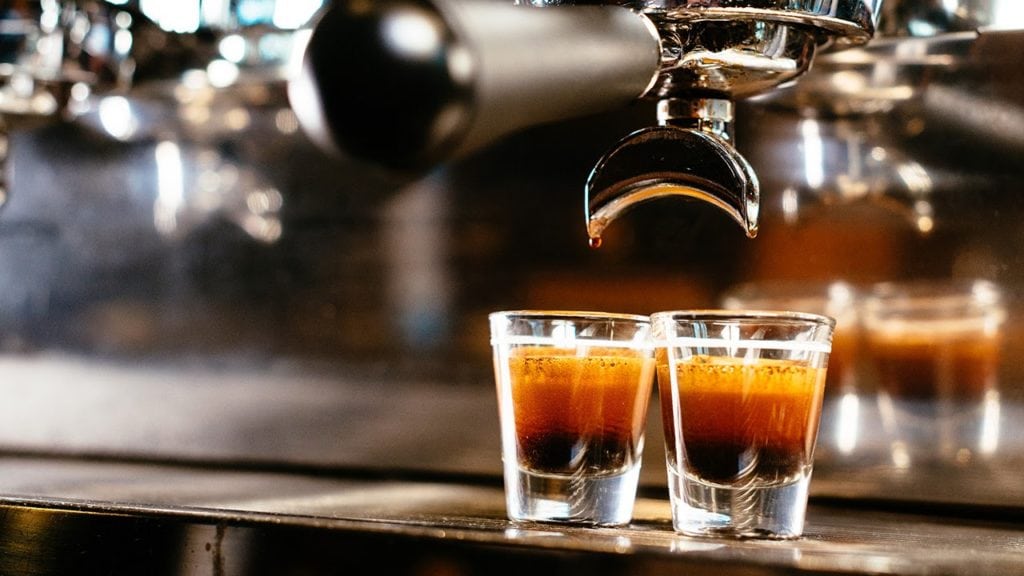
Bean grinder
Grinding beans is a very important link in the process of Espresso extraction. The size of coffee powder determines the speed and time of extraction. As far as Espresso is concerned, the finer the coffee powder is, the greater the extraction resistance is, the slower the extraction speed is, and the longer it takes. The ideal Espresso extraction time should be between 20 and 30 seconds, with extraction of 1 ounce (called single shot) or 2 ounces (double shots).
Grinding coffee beans requires a wealth of experience in grinding beans and a good grinding machine in order to grind out the appropriate thickness to achieve the above ideal extraction time. Generally speaking, the cheaper bean grinder has fewer settings and may not be ideal. The choice of bean grinder should be set at least 40 times before the ideal thickness of Espresso coffee powder can be obtained after many bean grinding experiments.
Espresso machine
Because pressure and water temperature are the two major factors of Espresso extraction, all kinds of machines are designed to achieve the ideal state of these two factors. Espresso machines use the following three ways to generate pressure, (1) spring lobe lever compression (Spring Lever), (2) vibrating compression (Vibratory Pump), and (3) rotary compression (Rotary Pump). The first two are mostly for family use, while the latter are mostly for commercial use. The spring lobe lever compression is more difficult to control the pressure, the vibration compression machine produces more noise, the commercial rotary compression machine controls the pressure well, the noise is small, and of course the machine is much more expensive.
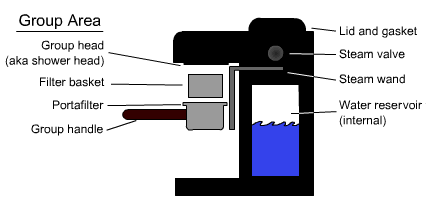
Espresso machines can generate hot water in four ways: (1) steam boiler, (2) single boiler (Single Boiler), (3) hot gas exchange (Heat Exchange), and (4) double boiler (Double Boiler). The first kind of machine is older, which converts steam into hot water extracted at an appropriate temperature, which is less accurate. The second kind of machine only uses a single boiler to extract Espresso with boiling water, and it also needs to produce steam from the same boiler to create milk foam (Frothing the Milk). It is difficult to control. After each extraction of Espresso, you may have to wait for hot water to heat up again. Cheaper machines, especially, are only suitable for household use. The third type of machine, which adjusts the temperature with a special mechanism, converts hot water and steam easily and quickly, which is adopted by advanced family-style Espresso machines. In the fourth way, separate boilers produce extraction hot water and steam, which are used by expensive commercial machines.
Brief introduction to the process and Technology of Espresso extraction
The following is the process of extracting Espresso
1. Preheat the Espresso machine first.
In general, Espresso machines usually need about 30 minutes to preheat before the water temperature reaches the standard. Some machines should be turned off after use, otherwise they may be damaged, while advanced machines will not be affected.
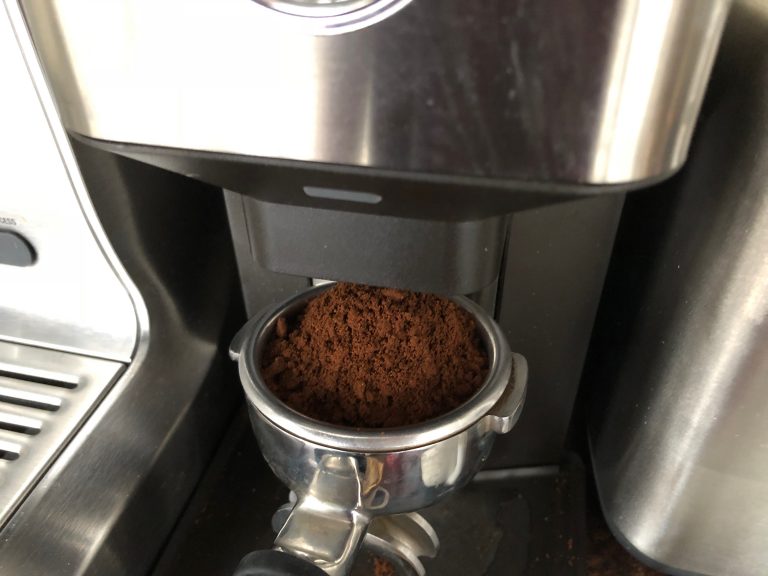
two。 Adjust the thickness setting of the bean grinder.
The size of coffee powder determines the very important extraction flow rate and time. According to each bean grinder, many experiments should be conducted to find the best scale. The use of the same machine may vary according to age, even if the same scale, the size of the ground coffee powder is slightly different. The appearance of ground coffee powder should be slightly granular, but close to powdered.
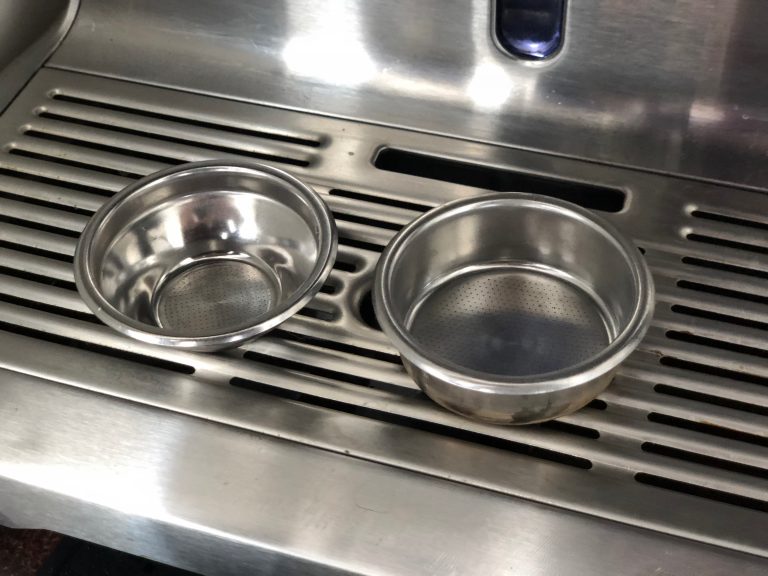
3. Select Single Shot or Double Shot.
The extraction time of single portion and double portion of Espresso is the same, about 18~25 seconds, but because of the high pressure of Espresso extraction, the less the amount of coffee powder, the more difficult it is to control the extraction quality. Double Shots extraction is easier to control and less error-prone. If you have to drink Single Shot only, divide it into two portions using a double-ended powder bowl (Portafilter).
4. Fill, evenly distribute, fill the coffee powder in the Portafilter Basket.
It is important that the right amount of coffee powder is placed in the powder bowl, gently stirred with your fingers, and then filled with a tamper. Coffee powder in the powder bowl thickness should be consistent, consistency should also be consistent, smooth surface, especially the powder bowl periphery. How much strength is needed to fill the pressure, after a period of experience, can naturally grasp.
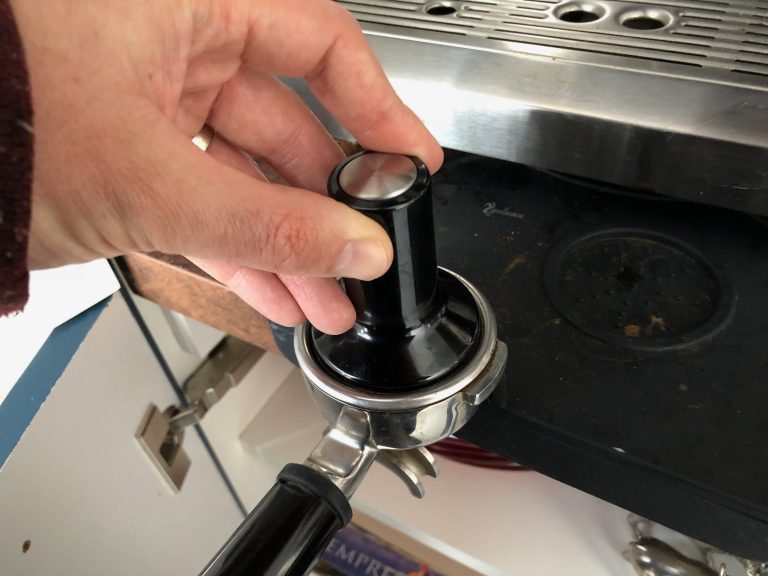
5. Extract Espresso.
Usually after the heat engine, the water temperature will be on the low side during the first extraction, so it is necessary to flash the cool water first, and then wait a few seconds to start the extraction of Espresso.
There should be no movement in the first few seconds of extraction, and then the smooth flow of fine dark brown Espresso, the later stage, the lighter the color, a total of about 20-30 seconds. The extraction should be stopped before the light golden color, otherwise the Espresso taste is bitter, but do not stop too early, otherwise the taste is too sour.
If the extraction flow is too fast and the flow column is too thick, it means that the beans are ground too thick or the filling force is not enough; on the contrary, if the extraction flow is too slow or even intermittent, it means that the beans are ground too fine or too strong.
The result of Espresso extraction depends on the diameter of coffee powder, the stability and density of filling pressure, the water temperature of extraction, the pressure and time of extraction. So many factors to achieve perfection, in fact, it takes a long time to hone to gain experience, a cup of Espresso is good or bad, barista (Barista) accounts for more than half of the importance.
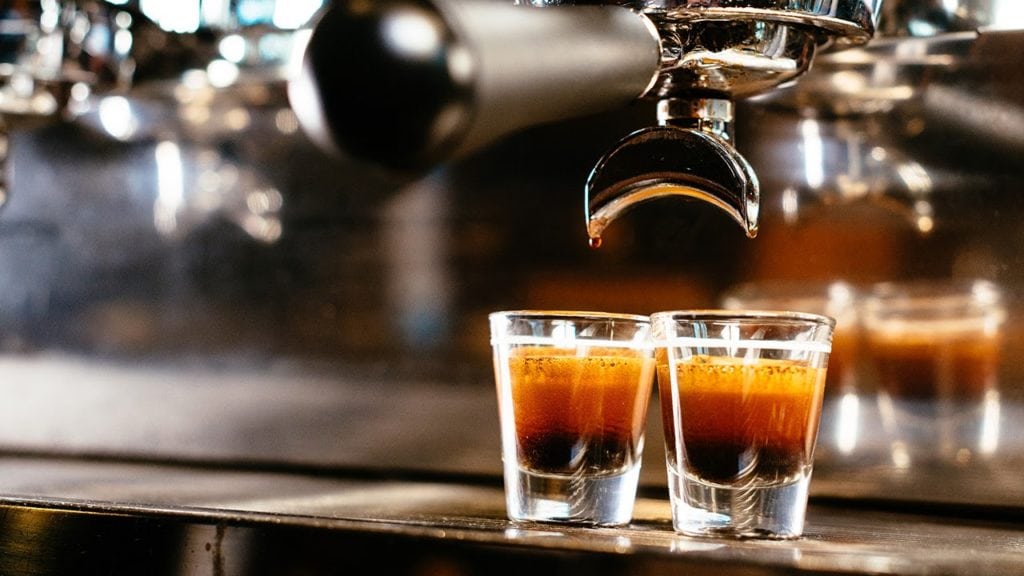
6. Follow-up and follow-up work.
The Espresso machine should be cleaned after each use, and backwashing (back wash) should also be done. After each extraction of 30 to 40 times, a more thoughtful backwashing should be done with detergent (Descaler). Usually every machine manufacturer will attach an instruction manual, which will increase the life of the machine if it is maintained as recommended.
In addition, after each extraction, we can think about how to adjust the factors according to the taste of Espresso, which can be used as a reference for the next extraction.
[recommended]:
Beginners must see! Essential knowledge for getting started with espresso Espresso
The soul of espresso! Five factors affecting "Espresso" extraction
How would you like your espresso? 5 simple steps to taste Espresso
END
Important Notice :
前街咖啡 FrontStreet Coffee has moved to new addredd:
FrontStreet Coffee Address: 315,Donghua East Road,GuangZhou
Tel:020 38364473
- Prev
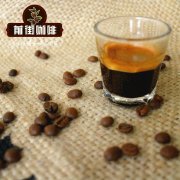
Coffee classification: espresso and American coffee
Professional coffee knowledge exchange more coffee bean information please follow the coffee workshop (Wechat official account cafe_style) Espresso is Italian, mostly translated as espresso or Italian espresso or espresso, meaning to make coffee for you right away. In the current global coffee market, Italian coffee can be said to be the largest mainstream. Because of the Italian essence
- Next
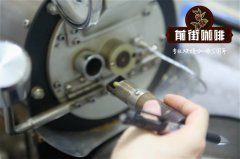
What happens at each stage of roasting and the characteristics of coffee flavor with different degrees of roasting
Professional coffee knowledge exchange more information about coffee beans Please pay attention to what happens at different stages of roasting in the coffee workshop (Wechat official account cafe_style). Different roasting methods will affect the flavor, aroma and taste of the final coffee, because chemical changes occur at different time points during roasting. But no matter what kind of baking, baking is mainly divided into three stages: dehydration, Maynard.
Related
- Beginners will see the "Coffee pull flower" guide!
- What is the difference between ice blog purified milk and ordinary milk coffee?
- Why is the Philippines the largest producer of crops in Liberia?
- For coffee extraction, should the fine powder be retained?
- How does extracted espresso fill pressed powder? How much strength does it take to press the powder?
- How to make jasmine cold extract coffee? Is the jasmine + latte good?
- Will this little toy really make the coffee taste better? How does Lily Drip affect coffee extraction?
- Will the action of slapping the filter cup also affect coffee extraction?
- What's the difference between powder-to-water ratio and powder-to-liquid ratio?
- What is the Ethiopian local species? What does it have to do with Heirloom native species?

